Delaware River Water Gap
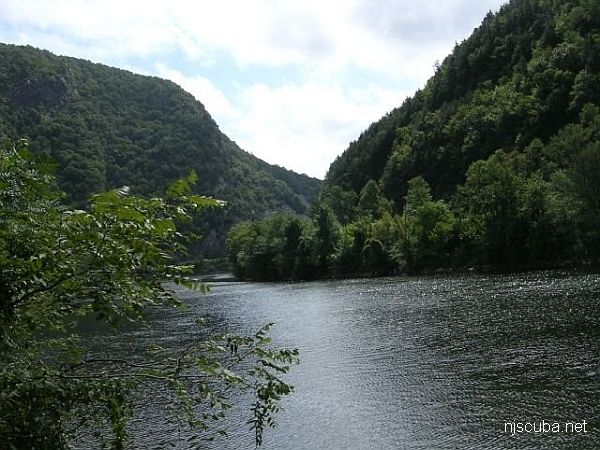
- Type:
- inland river / train wreck
- Depth:
- 6-18 ft
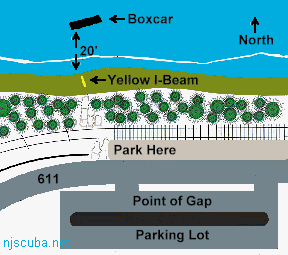
There have been at least two railroad accidents at this spot: the first on May 18, 1948, and the second on the evening of September 11, 1975.
In the first derailment, the locomotive jumped the tracks, killing two crewmen. The cars somehow stayed on the tracks, sparing the 76 passengers. It is rumored that the locomotive is still somewhere in the river mud, but there is little evidence of this.

In the second accident, two engines and thirteen cars of a freight train went into the river. The train's crew was unhurt in a third engine. Most of the wreckage was cleaned up, but several cars remain, including a closed boxcar in 14 ft of water, and nearby a flatbed car with a semi-trailer full of real Miller beer bottles ( empty, sorry. )
In the CNJ ( Central Railroad of New Jersey; see Cranford ) tables of the FRA database, this wreck is listed. The specifics are: Lead unit CNJ 3068, nearest station is listed as Slateford Junction, the temperature was 62 degrees, train speed was 37 mph, train number was 99 (ES-99), with 2460 tons, 17 loads, 41 empties, equipment damage was $546,840, track damage was $11,243, for a wreck total of $558,093. It also lists the time as 8:18 pm.
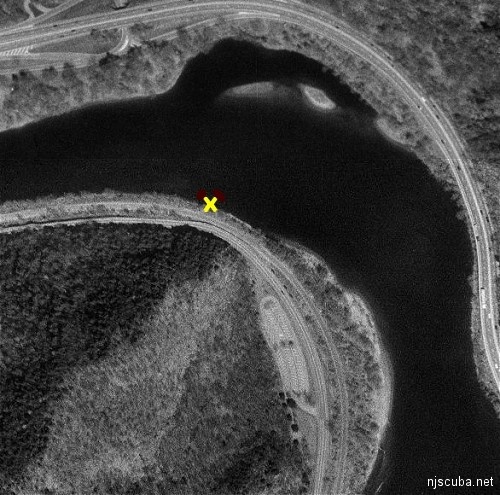
Most of the people who have been on the train wreck will probably tell you it's a 'one and done' dive. From what I've personally seen, it's either hit or miss. That also depends if anyone has been on the wreck before you got there. On a good day, you can almost make out the wreck from the surface. The top of the wreck starts around 7ft in the summertime, with a deep, dark hole downstream at the back bottoming out around 14ft.
Getting to the wreck site is only part of the fun. There is a large parking lot across the highway from the river, however, I would suggest that you park on the shoulder and unload there. Just before the road rounds the corner and the wall starts on the train tracks is a large area to pull off on. It's far safer unloading here. In fact, while I don't know if it's legal or not, we just simply parked there without a problem. Playing dodge-car isn't much fun with your arms full of expensive equipment.
Even more fun will be had getting your equipment from the road to the river. The easiest way I've found so far to get your kit to the water, besides making your buddy carry it for you, is to assemble it by your car, put it on, and hike down the bank to the water's edge. Securing a rope to hold onto is highly suggested here, not only for the trip down, but also for the trip back up the bank.
Once you're ready to get in, be absolutely certain you have your diver down flag, and a person onshore if at all possible. One of the first things you will notice in this area is that boaters have NO clue what a diver down flag means. Your surface support person will most likely have to wave off a boat or two.
The easiest way to hit very closely, if not right on top of the wreck, is to enter the water next to the yellow-painted railroad rail on your left, and the large tree on your right. With the tree directly behind you, take a bearing straight across the river, submerge, and head out approx. 20ft. This should run you into the boxcar.
Most of the remaining freight car is full of river muck now, with lots of fishing hooks, and monofilament all over the area. You will definitely need a good sharp knife. Every now and then, you might find yourself face to mask with a rather large pike. Search in the muck, on the side heading out to the river and you might come up with a bottle or two.
The rest of the wreck is located upstream of the boxcar. Current is almost non-existent here in the summer when the water is lower, and you'll be in a very slight back eddy. Take your time and look around. More bottles from the wreck have been found upstream in the 2002 summer season.
If you decide on heading out towards the center of the river, be warned that it comes close to 50ft, it's cold, dark, and murky. You will want a light with you, and watch out for the current. It can get very swift in the channel. From the reports of the others that dove with us the last time we were there, there's not much to see out that far besides discarded tires and trash.
Safe diving!
Dave Reiger dreiger@fast.net
11/27/2002
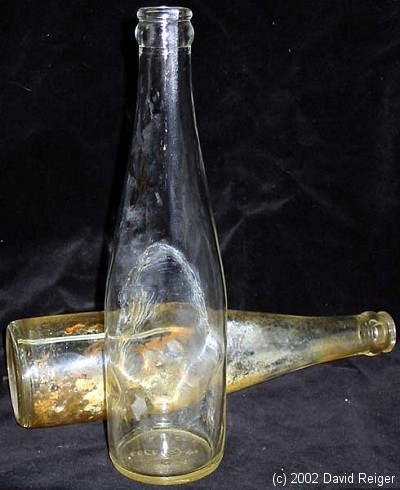
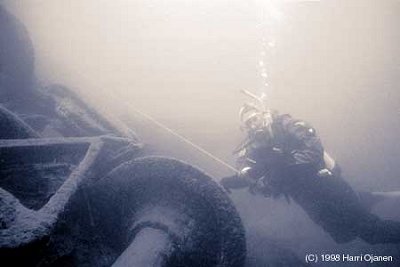
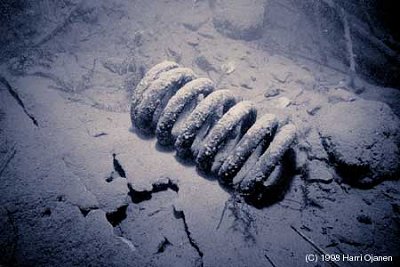
I was the conductor on the last road freights SE-98 / ES-99 as an "extra board" road conductor, because the regular conductor was on vacation for 2 weeks, and it just so happened I caught the 99/98 cycle until he returned. My normal location would have been in the 2nd locomotive unit, #3069, which burned after the derailment.
There had been a severe kink in the rail on the downgrade of Mount Minsi, which headed across the Gap into PA. I notified the Towerman at East Stroudsbourg on every westbound move ( ES-99 ) during my cycle. The normal speed through that area was 45 mph.
Had I caught that cycle one more time, chances are I wouldn't be adding this piece to your history of the wreck at the Gap in 1975.
James M. Kukor, CNJ Vets, 1972-1977.
Directions:
- From I-80, exit onto Rt. 611 South
- Follow 611 through town of Delaware Water Gap into Delaware Water Gap National Recreation Area
- Parking lot is at bottom of hill south of town on right
Scenic picture courtesy Divers Anonymous
Underwater photos courtesy of diver Harri Ojanen
Bottles and site description courtesy of David Reiger

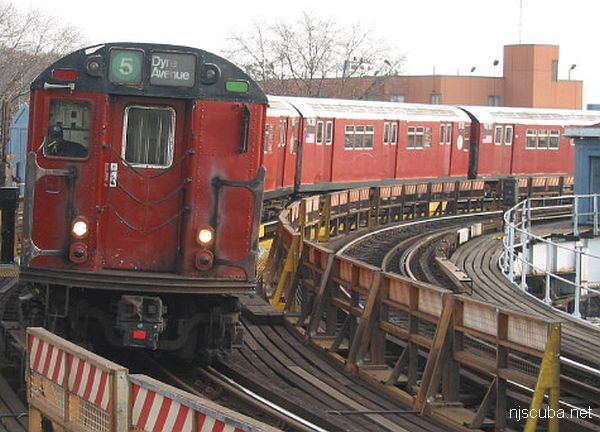

Questions or Inquiries?
Just want to say Hello? Sign the .